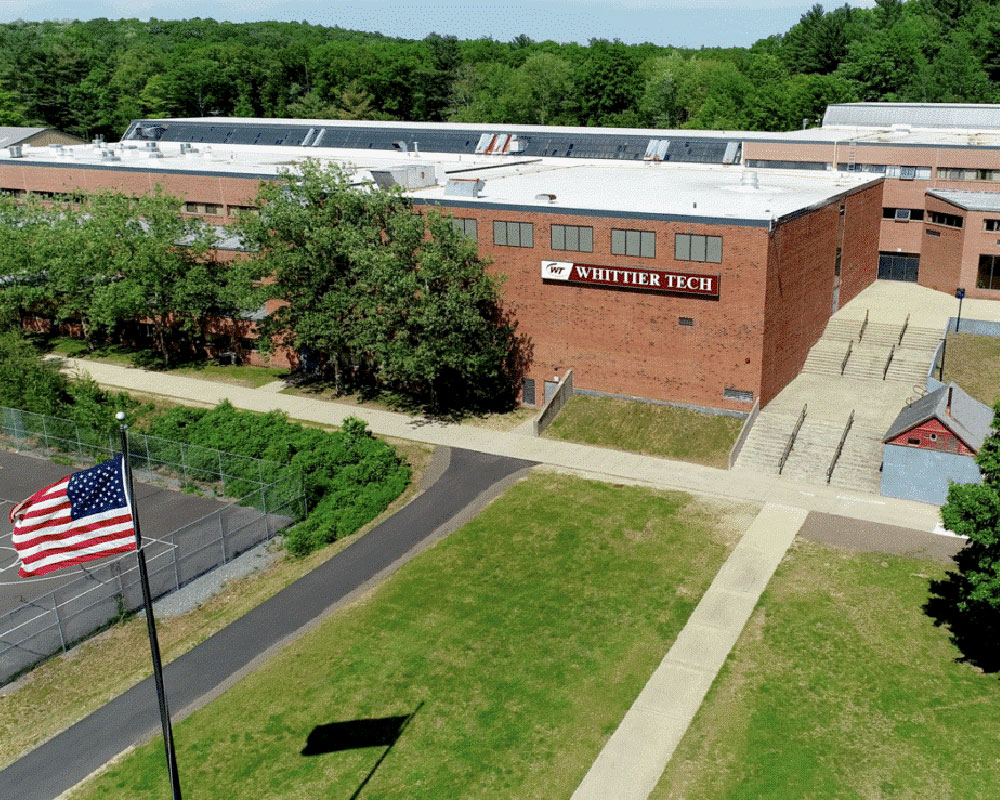A committee is recommending building a new $422.3 million building to replace the 50-year-old Whitter Regional Vocational Technical High School in Haverhill.
The School Building Committee voted Friday to build a three-story, W-shaped building that would contain almost all vocational, specialty, support and community programs on the first two floors and academic classes on the third floor. After reimbursement by the Massachusetts School Building Authority, the 11-member cities and towns would share the balance of $286.1 million.
“Whittier has long been committed to preparing the future of our vocational workforce, and we want what is best for our students. At the same time, we are very aware of our sending communities, and the financial concerns we all share,” Superintendent Maureen Lynch said, promising “to work toward the most cost-effective plan possible.”
Lynch told WHAV Tuesday the school paid for the $1.8 million state-required study of options out of its own savings rather than ask member communities. She noted the formula for sharing costs among the cities and towns is based on the numbers of school aged children, meaning Haverhill is expected to pay 44% of the district’s share.
The renovation/addition option was projected to cost $461.4 million, with a district share of $310.8 million after state reimbursement and would be expected to take six years to complete.
Under the new construction option, the campus would have new athletic fields, tennis and basketball courts and baseball/softball fields. The current stadium will remain.
The Building Committee has been meeting since January 2022 to consider all options, including code upgrades, renovation and addition and new construction. LeftField Project Management and JCJ Architecture worked with the Committee.
JCJ Architecture Senior Associate Alicia Caritano said current deficiencies include lack of sprinklers, accessibility issues, lack of lighting or natural lighting in some areas, no loading access for shops and a shortage of classroom space.
The school hosts 1,200 students and prepares them for careers in 23 pathways in fields of Arts and Communication, Construction, Manufacturing, Service, Technology and Transportation.

